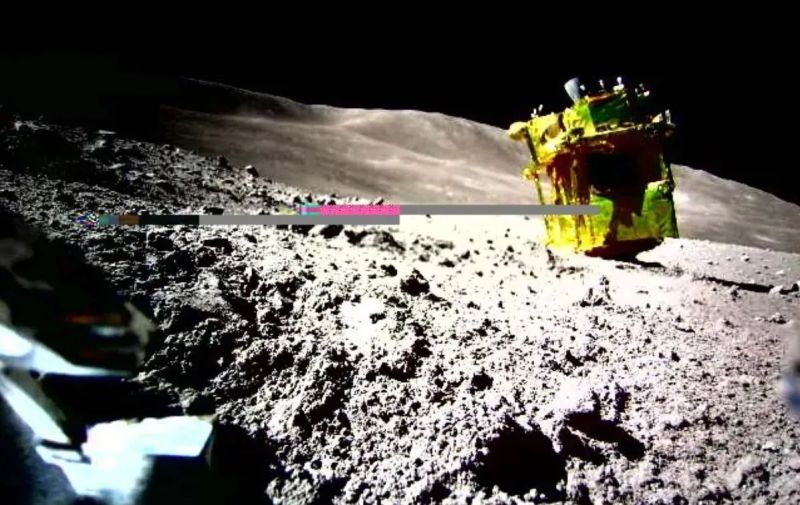When Japan’s SLIM lunar lander made a rather unconventional touch-down on the lunar surface, it had already disgorged two small lunar excursion vehicles from its innards: LEV-1 and LEV-2. Of these, the LEV-1 is not only capable of direct to Earth transmission, but it also has been assigned its own amateur radio license: JS1YMG, which makes it the first Ham radio station on the Moon. LEV-1 receives data from LEV-2, which is transmitted to Earth using its 1 Watt UHF circular polarization antenna as Morse code at 437.410 MHz. Although the data format hasn’t been published, [Daniel Estévez] (EA4GPZ) has been sleuthing around to figure it out.
Using captures from the 25 meter radiotelescope at Dwingeloo in the Netherlands, [Daniel] set to work deciphering what he knew to be telemetry data following a CCSDS standard. After some mix-and-matching he found that the encoding matched PCM/PSK/PM with a symbol rate of 64 baud and 2048 kHz subcarrier. The residual carrier is modulated in amplitude with Morse code, but initially this Morse code made no sense.

Fortunately a few fellow Hams pitched in and figured out that the amplitude signs for the Morse code were inverted. By inverting the amplitude, suddenly the Morse code looked a lot more clear, with the LEV-1’s call sign and what looked like hexadecimal data following it. Each of the frames is also followed by a CRC-16, which should make it possible to start decoding the data transmitted in each frame.

















What is the LEV-1 power supply?
Can it come back after the lunar night?
Will
VK6UU
437.410 MHz has run-of-the-mill sub-1GHz receiver IC written all over it (think SI4432, CC1101). What would it take to get good reception with hobbyist means?
Not saying we should build 25 meter dishes in our backyards, but maybe a bunch of people like SDRs equipped with GPSDOs?
The modulation is anything but run-of-the-mill l, subcarrier PSK with added ASK compoment in the carrier.
Some decent EME station might be able to receive it with some decent sdr.
But LEV-1 is still only 1watt on the lunar surface.
1 watt UHF?
And people say life is too short for QRP
Saying Morse Code is very very misleading
Let’s see some links for recorded audio and some decode results here! I’m very interested!
There’s IQ data to download, linked in the blog about decoding I think
We put some recorded audio on https://data.camras.nl/slim/audio/ , but the inverted Morse Code is almost impossible to decode by listening.
Interestingly, there were plans to deploy ham radio equipment in the days of Apollo program (see Project Moonray).
The ideas were from the mid-60s, after OSCAR-1 but before Star Trek had aired on TV first time.
Unfortunately, the Americans decided to stop these missions.
Apollo 18 and subsequent missions never made it.
Another missed opportunity, to all of us. :(
Let’s imagine if we had an 23cm/70m repeater on moon. Along with a color-SSTV system, maybe.
Maybe Artemis or any future mission will remember the past and and perhaps will include ham equipment finally?
Let’s hope for it.
You don’t need a repeater on the moon, you can bounce signals off the moon. With modern weak signal datamodes moon bounce is relatively easy and cheap. There is also an amateur radio geostationary satellite that is voice and live TV capable but does not cover USA.
Where can one find a no BS crash course on moon bounce
Where does it cover
I was going to say that’s just 2 MiHz, but the numbers don’t work that way. (mebi- = 1,0242 = 1,048,576, not 1,024 × 1,000 = 1,024,000.) If anything, it would have to be something like 2 KikHz, but it feels very wrong to mix binary and decimal prefixes like that, on top of double prefixing.
The Wikipedia article on binary prefixes does say, though:
Here is an interesting power budget calculation for JS1YMG:
https://owenduffy.net/blog/?p=31061#more-31061